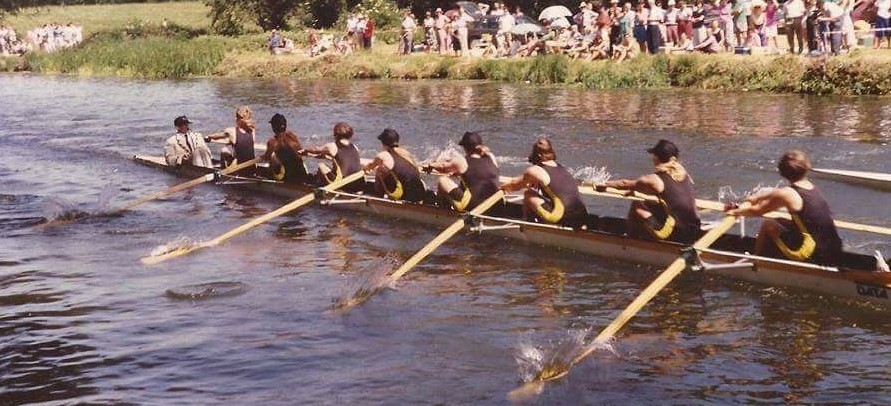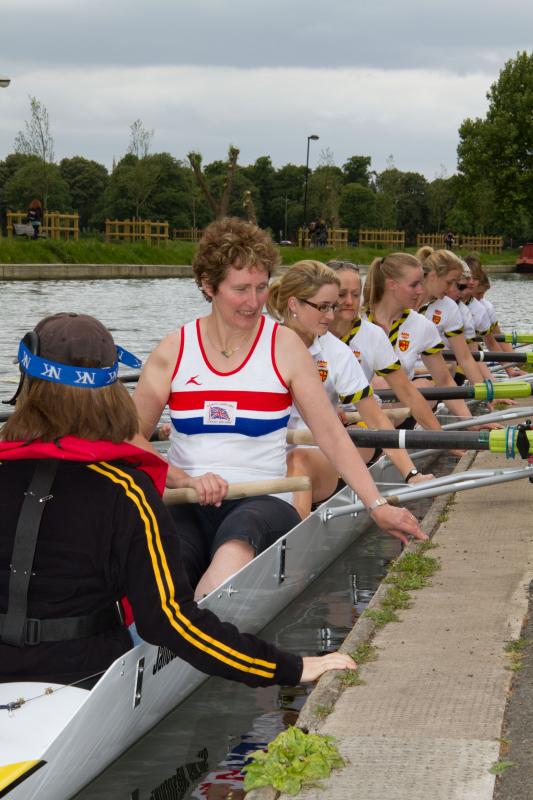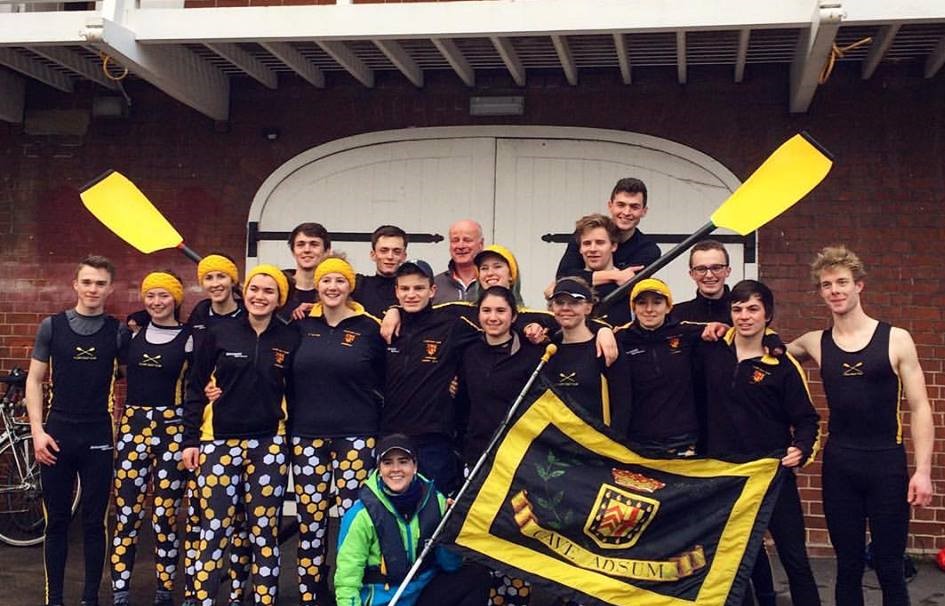Club history
One of the oldest Cambridge college boat clubs

Perhaps due to the lack of women in the early days of Clare Boat Club, the men saw it as fitting to express their femininity by rowing with pink blades - sporting a white racing strip - as well as wearing pink jackets and matching neck scarves. That being said, a ten year debate began in 1845 about the club's preferred colour combination and this is illustrated by numerous discussions in the Club minutes about 'changes in the style, colour and cloth' of the uniform. By 1852 Clare had adopted light blue with navy trim, with the present 'yellow fire' taking over soon thereafter. Members of Clare have since been afforded the small pleasure of seeing the less well-established 'modern' colleges such as Churchill wearing their cast-off colour combinations.
The earlier days also saw much lively debate amongst the Boat Club committee on such burning issues as the importance of bread roll throwing in the termly Boat Club dinners. Perhaps surprisingly, the tradition was retained until relatively recently due to the support of the College Dean ('a staunch bread-roll thrower himself'). Rowers were also afforded more respect in those days, with a separate buttery-provided diet for the first boat, and a choice of not one but two latrines at their summer training camp ('providing consequently better air' over lesser locations). Only time will tell if such a heightened respect for sporting achievement will return in the future.

After entering their first Bumps race in 1831, the men of Clare rapidly made their mark, climbing to second place by the end of 1832. Sadly, this new found success was not to last with Clare dropping steadily over the following decade, reaching an all-time low of forty-first in 1845. Twenty years of mediocre performance were followed by twenty better years, the Mays boat reaching fourth in 1886, the year before the Lent races began. However, it was to be nearly half a century before this position was reached again.
Clare's men won The Ladies' Challenge Plate at Henley Royal Regatta in 1937 and their first headship followed soon thereafter in the Lents of 1939. This was followed by four successive Mays headships in the war years of 1941-44. Proof that success could also be gained in peacetime came with the Mays headship in 1949. This boat was stroked by David Jennens: an Olympian and Clare's most successful men's rower. The men's boats maintained respectable positions in the first divisions through the 50s and 60s, culminating in a Lents headship in 1973. A period of good performances in the 70s and 80s was followed by a lean patch in the 90s, with both the Lents and Mays boats flirting with their second divisions on several occasions.
The new millennium saw residence in the first divisions re-established, with the Lents boat bumping up to 4th by 2009. The 2010s saw another golden age for the men's side with the Mays boat rising to second on the river in 2018. This was in addition to winning the University IVs for six consecutive years (2013-2018). Clare's men would also qualified for the Temple Challenge Cup at Henley Royal Regatta in 2016 and 2018. CUBC representatives Wanne Kromdijk (Goldie, '10), Joel Jennings (Blue Boat '11, Goldie, '09, '10, '12), Ben Evans (Goldie '11), Peter Rees (Goldie '16, '17, '18) and Harry Ellison-Wright (Goldie '18) all played their part in this period of success, as did CULRC rowers Andrzej Hunt (CULRC President '14) and Tim Rademacher (CULRC '15).

Clare entered the women's races from the outset, and were a strong force for their first decade on the Cam. The Mays boat went Head of the River in the first races of 1974, and then again in 1979 and 1980. These boats were stroked by Penny Sweet: an Olympian and Clare's most successful women's rower. The women's boats maintained positions in the upper half of the first divisions, except for dips in the early 90s in the Mays and later 90s in the Lents. The impressive rise of the Lents boat to headship in 2006 fittingly coincided with the 175th Anniversary of Clare Boat Club. This was the start of the women's side's very own golden age, culminating with in the Mays boat winning blades to finish Head of the River in 2013. CUWBC were heavily represented in the boat that year with Blues Esther Momcilovic, Claire Watkins and Jessica Denman, as well as Blondie rowers Anna Slotala, Rachel Boyd and Anna-Lena Elkington, all playing their part in the Boat Club's success. Esther Momcilovic would also go on to become CUWBC President in 2014, as well as cox Clare's men in Mays 2015.

Clare now typically produces eight crews for the Mays and this level of participation represents one of the highest proportions of students to row in any Cambridge college. Needless to say, this is a testament to the continuing success of Clare Boat Club in providing sporting enjoyment as a counterbalance to academic success.